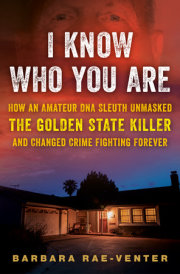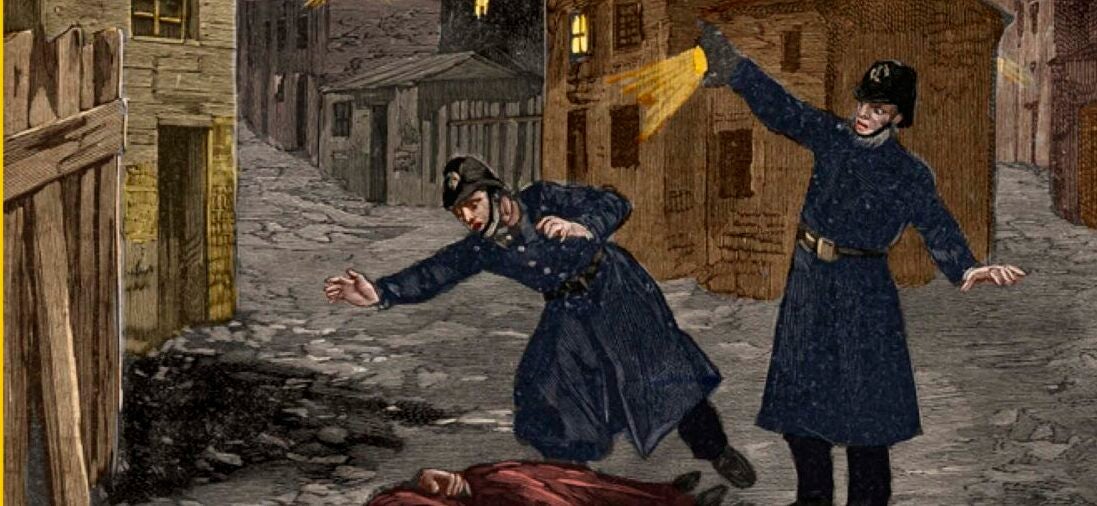1 On March 3, 2015, a volunteer genealogist at a not-for-profit organization called DNAAdoption opened the following email:
SUBJECT: Unknown Person Search
MESSAGE: I work for the San Bernardino County Sheriff’s Department. I am working a cold case involving a kidnapping of a child when she was approx. age 2; she was recovered at approx. age 5. We do not know her real name, date of birth, etc. She is now grown in her ’30s and the only known survivor of the suspect. As we back track the suspect for other victims we are attempting to tell her who she is. We have already signed up with Ancestry DNA and gotten a hit on a second cousin. I have been reading your site and would like to ask if you had any other advice given the uniqueness of our search.
The person who sent the email was Deputy Peter Headley of the San Bernardino County Sheriff’s Department Crimes Against Children Detail. The volunteer was me.
It was only a few months earlier that I had signed up as a search angel with DNAAdoption, a group that teaches adoptees how to identify biological relatives using autosomal DNA. Nearly all of the emails that I opened were from adoptees hoping to learn how to identify their birth parents, and I did my best to answer their questions. But this email was different. I was intrigued, so I immediately called Deputy Headley to learn more.
He told me the story of a girl who had been abducted and was now part of a long-cold case. Her name was Lisa Jensen, and her story—at least the part of it that was known to law enforcement—began in 1986, when Lisa was around five years old and living at the Santa Cruz Ranch RV Resort. It was an unremarkable trailer park tucked around the redwood trees of California’s Santa Cruz Mountains, on the site of a bygone theme park called Santa’s Village.
That year, Lisa befriended a woman named Kathy Decker, who lived in a mobile home at the park. Kathy came to know Lisa as a friendly and chatty child, outwardly normal in most ways. But Lisa was also alarmingly skinny, and she had bruises on her body and stains on her clothes. She had no toys of her own, and she came over to play with Kathy’s young grandson nearly every day, as if she had nowhere else to go. Kathy noticed that Lisa and her father—a widower named Gordon Jensen, who worked at the park as a handyman—slept in an open camper shell in the back of a pickup truck, even on nights when it was freezing.
“Lisa was tattered and torn,” Kathy later said. “She was a little ragamuffin.”
Just as Lisa looked to Kathy’s grandson for company, Lisa’s father, Gordon, turned to Kathy for emotional support. He confided in her about how much he missed his late wife, who he said had died of cancer when Lisa was just an infant. Kathy watched him break down in tears as he remembered her. Jensen also complained about how hard it was to be a single father to Lisa.
When Kathy mentioned that her own daughter and son-in-law were eager to have a child but had not been able to conceive, it was Gordon Jensen who suggested that Kathy’s daughter take little Lisa to live with her in Chico Hills, California, for three weeks—a trial run before, perhaps, he would grant them permission to legally adopt her. Lisa was excited by the idea. When Kathy bought new shoes for her for the trip to Chico Hills, Lisa wore them to bed.
It was an odd arrangement, to be sure, but for a while it worked out well. Lisa loved her new home with Kathy’s daughter and husband, and they in turn loved the little girl.
Then, one day, young Lisa began describing the ways her father had abused her. Her stories were shocking and sickening—one police officer later said Lisa had been “severely molested and tortured.” Kathy’s daughter quickly called the police.
Officers from the San Bernardino County Sheriff’s Department soon arrived at the trailer park, but by the time they got there Gordon Jensen was gone. He had packed up and disappeared, leaving Lisa behind with Kathy’s family.
Investigator Cliff Harris of the San Bernardino County Sheriff’s Department searched the Santa Cruz Ranch RV Resort and pulled a single fingerprint off video equipment that Jensen had installed in the park’s community area. It appeared that Jensen had wiped off the equipment before leaving but had overlooked a single incriminating print. Harris ran the fingerprint and learned that Jensen, under the alias Curtis Kimball, had been arrested a year earlier, in 1985, after driving drunk and crashing a car with his young daughter, Lisa, in it. That year, a district attorney charged Jensen with driving under the influence and endangering the welfare of a child.
But Jensen failed to show up at court on those charges, and then he fell off the radar. Law enforcement picked up his trail one year later when Kathy Decker’s daughter called police about him.
And now, yet again, Jensen had slipped away. A full year passed, then another. Meanwhile, because Gordon Jensen had fled before signing any adoption papers, and because Lisa was not related to Kathy’s daughter and had a living father, she was taken away from Kathy’s family and placed in the custody of the state.
For Kathy Decker and her daughter, the perfect ending never happened.
For Lisa, her escape from Gordon Jensen led her into foster care and created a lasting uncertainty about her identity. She had no knowledge of her mother, no birth certificate—no documents at all—and the name she knew her father by was, police had learned, an alias.
But that was not all. Some years later, in 2003, a DNA test revealed that Gordon Jensen was not Lisa’s biological father. He was her abductor.
Which meant that Lisa Jensen was, in technical terms, a “living Jane Doe”—a female whose name and identity are unknown.
In November 1988, police finally caught up with Gordon Jensen. Officers pulled over a car in San Luis Obispo on suspicion that it was stolen. The driver identified himself as Gerry Mockerman and produced documents with that name on them. He was poised and sure of himself. The driver’s fingerprints, however, revealed that the man was actually Gordon Jensen. He was arrested for driving a stolen vehicle, and an investigation connected him to the abandonment of Lisa Jensen in 1986. “He would steal people’s identities, and he had all their names stored up in his head,” says Deputy Headley of Gordon Jensen. “He had an incredible memory and he was a very smart guy. He spoke several languages fluently.”
For the crime of abandoning Lisa, a judge sentenced Jensen to three years in prison.
Jensen served only a small part of that stretch before being paroled in 1990. He then did what he had done many times before in his criminal career: he vanished, again, leaving no trace, this time for twelve long years.
In late 2012, Lisa Jensen’s long-unsolved Jane Doe case was taken over by San Bernardino deputy Peter Headley. (San Bernardino is a large county just east of Los Angeles.)
A Southern California native who got his start in law enforcement conducting mountain search-and-rescue missions, Headley was working the Crimes Against Children Detail when he picked up Lisa’s case. Lisa was now in her thirties and had children of her own. She insisted on living a quiet, private life, but she was also determined to uncover her biological identity. Despite the trauma of her early years, Lisa was a vibrant, beautiful woman who embraced life, taught dance classes, and was fiercely protective of her family.
For years Lisa and Deputy Headley worked together to find enough bits of information to pin down her real name and establish her identity, but, sadly, they made little progress.
“It was a cold case going way, way back, and people who knew about it had died, or they could not remember,” Headley told me. And as for police interviews of Jensen, “he never gave us anything. He said he couldn’t even remember Lisa.”
Neither Lisa nor Headley gave up. One day, Lisa watched the genealogy TV show
Who Do You Think You Are?, which follows celebrities as they trace their family trees to learn more about their personal histories. After watching the show, Lisa called Deputy Headley.
“Do you think DNA could work for me?” she asked.
Copyright © 2023 by Barbara Rae-Venter. All rights reserved. No part of this excerpt may be reproduced or reprinted without permission in writing from the publisher.







